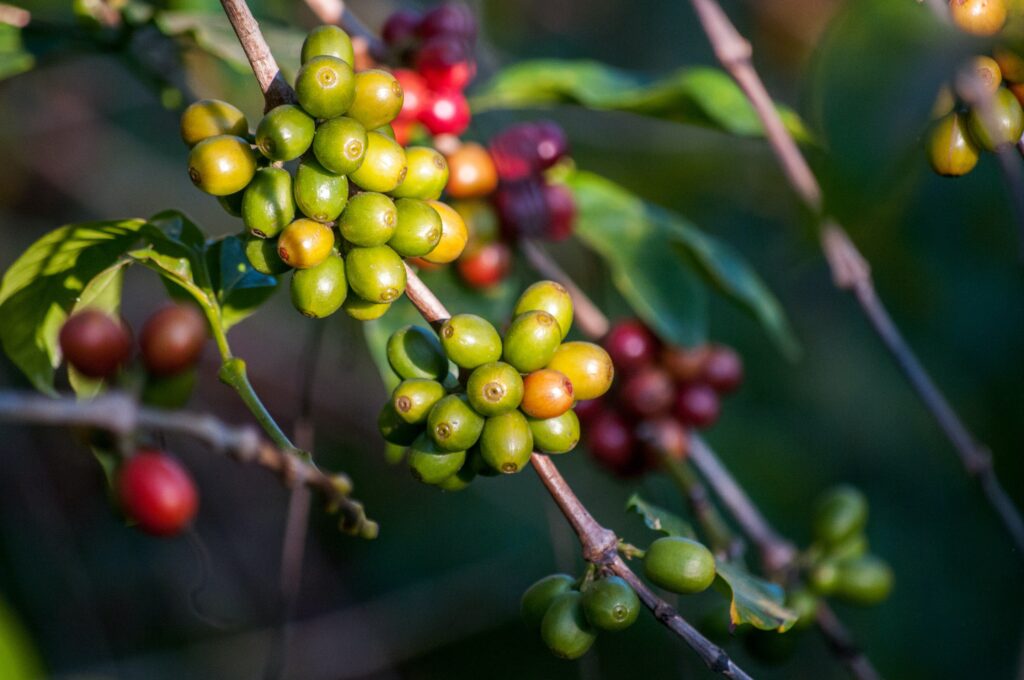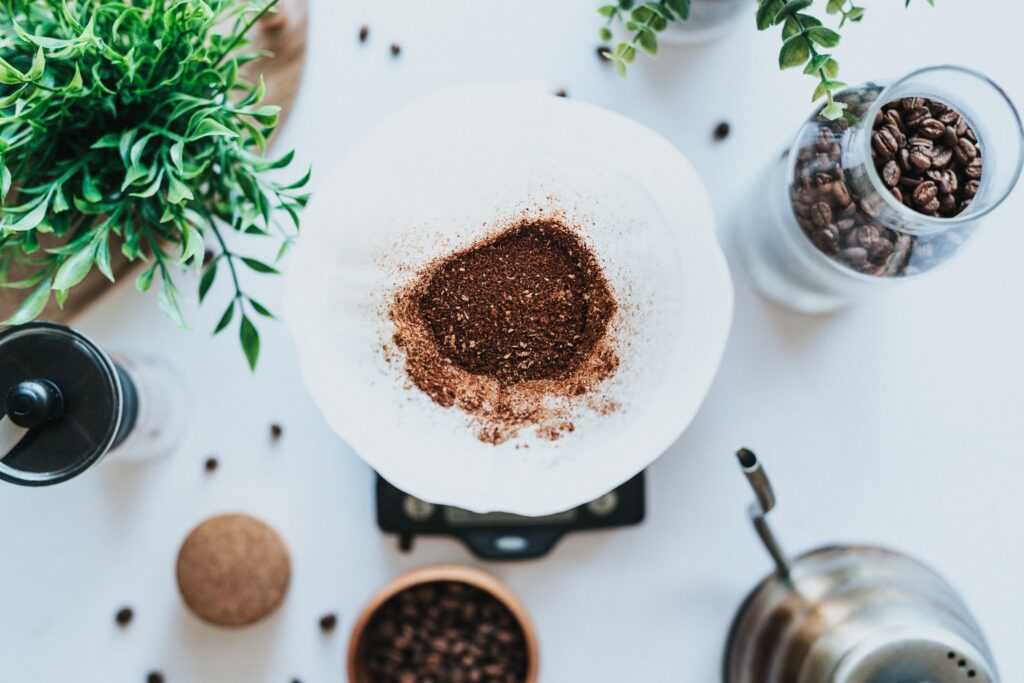coffee education
-
Posted: December 08, 2021Categories: Coffee 101
-
Posted: November 24, 2021Categories: Coffee 101
-
Posted: October 27, 2021Categories: Coffee 101
-
Posted: October 20, 2021Categories: The BeanRead more »
It’s easy to get overwhelmed by the endless choices when shopping for coffee beans. To help you navigate the coffee bean market, today we’re taking a step back to discuss the main differences between the two main types of coffee beans: Arabica and Robusta. But first, some quick facts. Arabica beans make up about 60% of worldwide coffee bean production. They grow at higher altitudes and thrive in cooler temperatures of 15 to 24ºC. Arabica beans are primarily grown in South America and Africa. Robusta beans make up most of the remaining 40% of worldwide coffee bean cultivation. They can grow at lower altitudes and thrive in warmer temperatures of 24 to 30ºC. Robusta is mainly grown in Southeast Asia, Africa and Latin America. So, which should you choose? Here are their top differences to help you decide which will suit your taste and lifestyle better.
Taste
Arabica coffee beans tend to have a smoother, sweeter taste with hints of fruits, berries, chocolate or sugar. They come in a wide range of varieties depending on where they are cultivated. Arabica beans can be sweet and soft but also sharp and tangy. The fun part is trying Arabica beans from different regions to see which you like best. [caption id="attachment_20132" align="alignnone" width="800"]
-
Posted: September 29, 2021Categories: Coffee 101
-
Posted: September 15, 2021Categories: Coffee 101
-
Posted: August 25, 2021Categories: Coffee 101
-
Posted: August 04, 2021Categories: The BeanRead more »
Let’s face it, online shopping is unbeatable for today’s lifestyles, or what many are calling “the new normal”. Of course, there are plenty of good reasons why many still prefer making in-store purchases; you can see the item, feel the item, and at times, even try the item, thus greatly decreasing your chances of dealing with the dreaded buyer’s remorse. But when it’s not convenient to head out or you’re pressed for time, it’s natural to want to make purchases with a few clicks on the Internet. E-shopping is fast, easy, and you don’t even need to leave home. For hardcore java lovers, you’ll be glad to know buying fresh coffee beans online is 100% possible. You just need to know what to look out for.
Price
[caption id="attachment_17397" align="alignnone" width="2560"] The price of a packet of beans says a lot about its quality/cupping score, so pay attention to that. Photo from Bogdan Carmaciu.[/caption] Price isn’t just a number when shopping for coffee beans. It’s directly related to a coffee’s cupping score. So what is cupping, you ask? It refers to a standardised, globally recognised process in which a cup of coffee is evaluated based on aspects such as flavour, acidity, texture, sweetness – just to name a few. The score ranges between one to 100, and by determining a coffee’s quality this way, a price per kilo can be decided as fairly as possible. A score of around 80 is regarded as pretty decent, but since cupping scores aren’t usually listed on the packaging, you’re better off looking at prices and
The price of a packet of beans says a lot about its quality/cupping score, so pay attention to that. Photo from Bogdan Carmaciu.[/caption] Price isn’t just a number when shopping for coffee beans. It’s directly related to a coffee’s cupping score. So what is cupping, you ask? It refers to a standardised, globally recognised process in which a cup of coffee is evaluated based on aspects such as flavour, acidity, texture, sweetness – just to name a few. The score ranges between one to 100, and by determining a coffee’s quality this way, a price per kilo can be decided as fairly as possible. A score of around 80 is regarded as pretty decent, but since cupping scores aren’t usually listed on the packaging, you’re better off looking at prices and
-
Posted: July 28, 2021Categories: Coffee 101
-
Posted: July 14, 2021Categories: The ToolsRead more »
Like everything else out there, from cheese to wine and even furniture, there isn’t just one type of coffee. The beans they’re made from vary greatly, and more often than not, with great variation, comes decision fatigue. With an overwhelming amount of choices out there in the market, we get that a seemingly simple decision like choosing a type of bean to use for your machine might turn out to be rather daunting. Where do you begin with your De’Longhi bean-to-cup coffee maker?
Look at the Colour of the Roast
[caption id="attachment_17235" align="alignnone" width="2560"] The colour of a roast is a good indicator of qualities like oiliness, which matters depending on the coffee machine you’re using. Photo from Jakub Kapusnak.[/caption] Roasting coffee beans at a high temperature is a process (well, some say an art) that helps develop and boost aromas. If you don’t get this step right, the beans may lose their aromas and specificity. Here are some general guidelines: if the roast is very dark, the beans will be too bitter. If the roast is not dark enough, the coffee beans may end up tasting a little too acidic. A light roast is mostly best suited for filter coffee extraction. This is also known as a longer extraction aka slow coffee. With this filter method, what you’ll get is a fruitier coffee that’s more acidic. A medium/dark roast is ideal for espresso machines, and not so much bean-to-cup machines, otherwise, you’ll end up with coffee that’s, again, way too
The colour of a roast is a good indicator of qualities like oiliness, which matters depending on the coffee machine you’re using. Photo from Jakub Kapusnak.[/caption] Roasting coffee beans at a high temperature is a process (well, some say an art) that helps develop and boost aromas. If you don’t get this step right, the beans may lose their aromas and specificity. Here are some general guidelines: if the roast is very dark, the beans will be too bitter. If the roast is not dark enough, the coffee beans may end up tasting a little too acidic. A light roast is mostly best suited for filter coffee extraction. This is also known as a longer extraction aka slow coffee. With this filter method, what you’ll get is a fruitier coffee that’s more acidic. A medium/dark roast is ideal for espresso machines, and not so much bean-to-cup machines, otherwise, you’ll end up with coffee that’s, again, way too



















